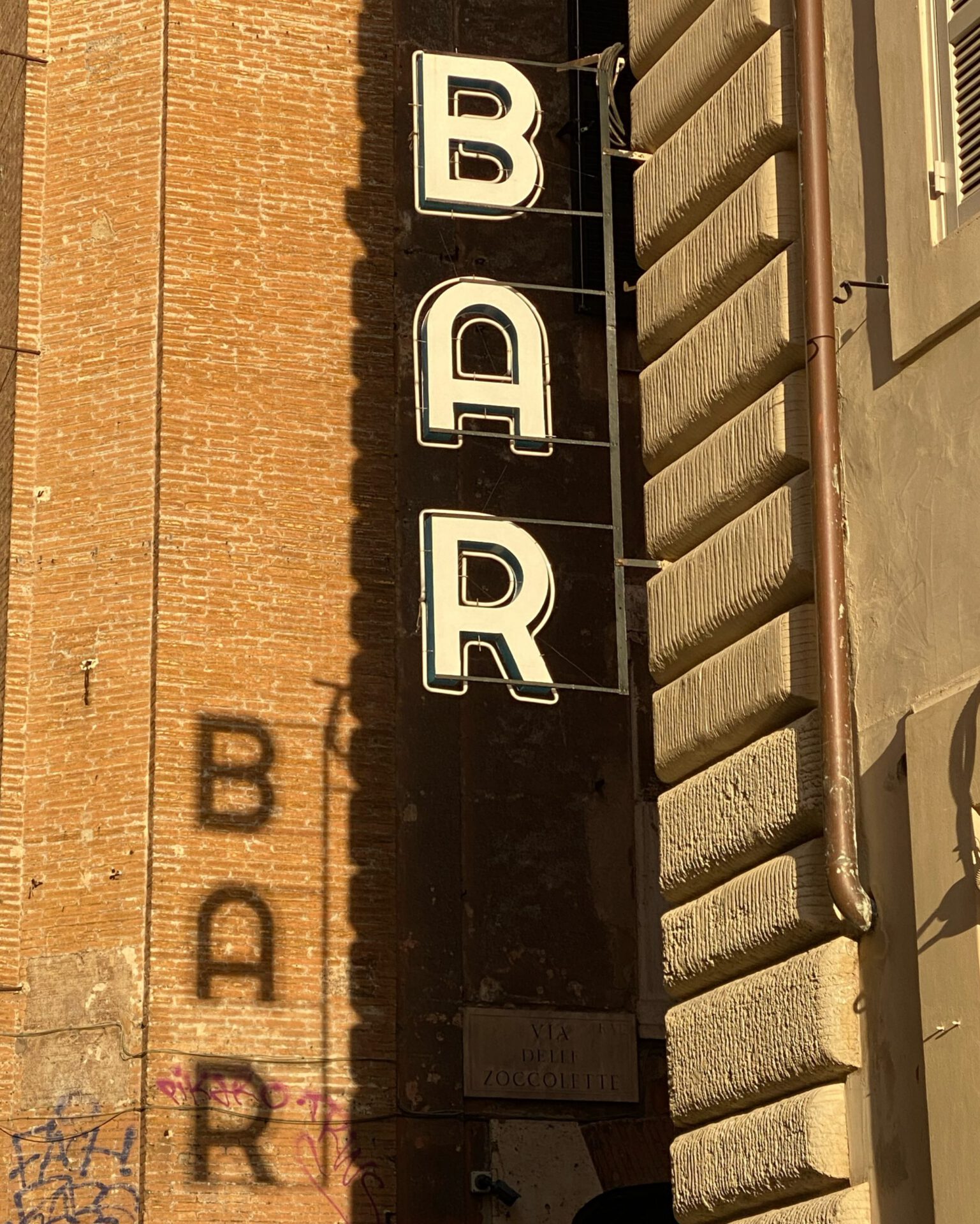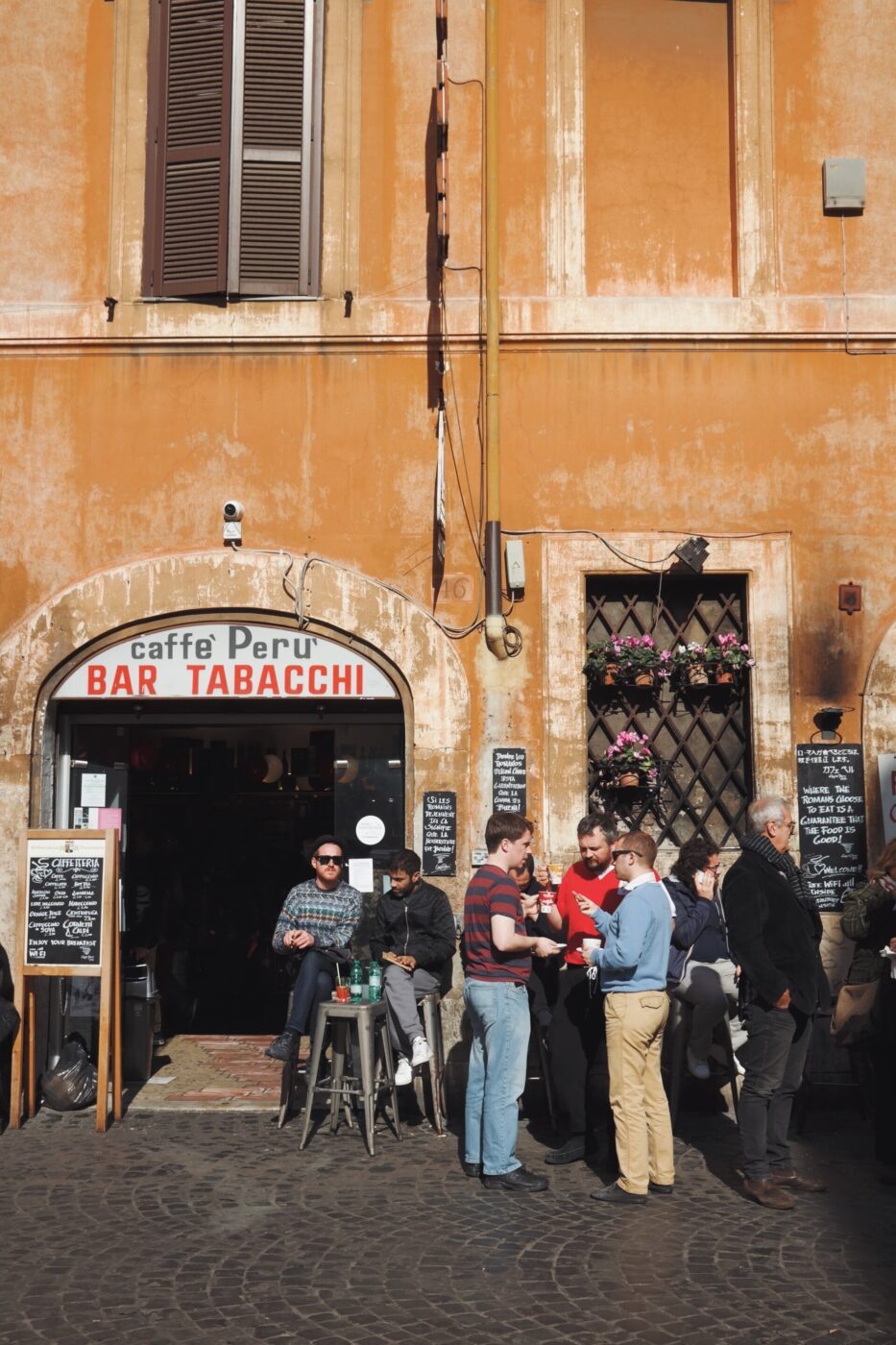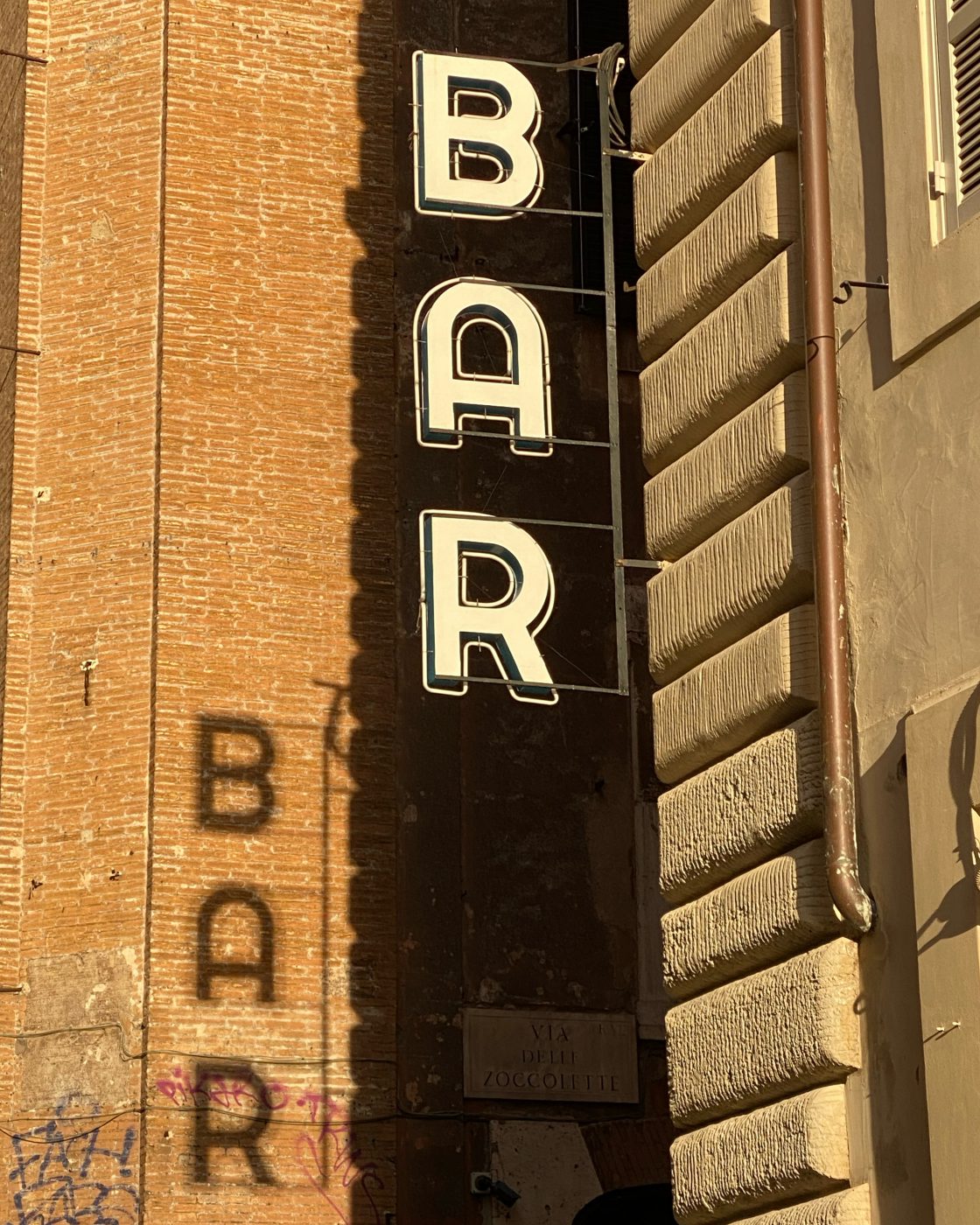Those who live in small cities in Italy are not ruled by traffic or by a busy transportation system, and are not stressed by lost tourists or expensive rent. Instead, their lives are marked by a place like no other: the local bar (also known as il Baretto).
Il Baretto keeps Italians’ lives in beat with the rhythm of the day: it’s the place for a cappuccino in the morning, a quick bite for lunch, aperitivo before dinner, and an amaro for a nightcap. Like an orchestra–here, the regulars play the role of musicians and the bartender a conductor–the venue makes its own melody, composed of the sound of laughs, the buzz of the coffee machine, the jingle of ice poured into tumblers, the pop of the proseccos, and the grinding of the juicer. An old radio always plays the same songs, the musical background of everlasting conversations about football, love, and politics. Piles of regional newspapers accumulated in the corners of the room and an old TV broadcasting every single football match ever shown in any European league are just the finishing touches of such friendly environments. Yes, of course, bars are also found in big cities in the form of fancy cafes with crystal clear windows, fashionable customers, and posh drinks, but il Baretto has a different spirit, less cool perhaps, but definitely more genuine.
Let’s take a look at the prototypical bar, the platonic idea of the baretto di provincia. Austere in look, it’s mostly covered in wooden panels with a long counter, a few tables and chairs, and one of the following amusements: flippers (in fashion in the 60s), pool (a rare breed, mostly bars from the 30s), table soccer (those with outdoor space), or slot machines (very common nowadays). The walls are covered with artworks of questionable taste: second-division football team scarfs, terrible band record covers, paintings powered by the local artist (famous inside the Barretto, unknown outside of it), postcards from popular places, and, weirdly, foreign currencies hung on the walls like war collectables. Between the counter and a pile of forgotten liquor from unspecified decades stands the not-so-still bartender.
Usually very grumpy, the bartender is like Schroedinger’s cat, sober and drunk at the same time, depending on whom they are talking to. Drunk with their friends, very talkative with regulars, extremely cold and inexplicably sober with strangers who enter by mistake, the bartender lives inside the bar 24/7. One might even suspect they sleep inside the bar between the barrels of beer and the toilet.

Like a spot from a Balzac novel, the Barretto contains all human stereotypes in one room. A classic member of this cast is the sports fan, someone who spends the days reading sports newspapers and watching football matches, but also the Grand Prix, Giro d’Italia, Tour de France, Six Nations, and any other athletic program that might be showing. A bar also wouldn’t be such without the womanizer, the one whose only goal in life is the pursuit of the female species. He only drinks red wine and behaves like a character out of a Russian novel–tormented by passion and internal turmoils. To conclude our collection of characters, we add the drunkard and the liar–sometimes the same person, sometimes two separate people. The former is roughly 1,000 years old and has spent 999 years standing at the counter with a glass of brandy in his hands. A red nose, watery eyes, and breath worthy of a dragon are just a few of the essential traits. The latter is a quintessential part of the Baretto environment, a person who, like a broken record, continuously blabs made-up stories involving the liar and *insert famous person here*.
The piece de resistance is the drink selection, whose style is simple: anything cool or fashionable is strictly forbidden. Hot beverages include only the espresso, macchiato, and cappuccino (allowed until 2 PM at the latest)… no babyccino or matcha latte will ever touch the counter of the bar. When it comes to cold beverages, soft drinks include Acqua Brillante (very unusual tonic water), Gazzosa (a gourmet version of Sprite), Chinotto (bergamot-flavored sparkling drink), and San Bitter (a ginger-based non-alcoholic drink). But the truly special offerings lie in the range of alcoholic beverages: outdated beers, biological and local wines from before they were called such (“this is my cousin’s Dolcetto” you might hear from the bartender), and a collection of rusty, obsolete vermouths and amaros–only used for the Negroni (and its variations) and caffè corretto. Grappa is a must, as well as Fernet Branca, Sambuca (for the brave ones), Vecchia Romagna (for those with a PhD in bar drinking), Amaro Petrus and Unicum (for the elders), and vermouth with extinct herbs for the jurassic old ladies. And the food? The bartender prepares daily a selection of tramezzini and sandwiches, such as cheese and ham, tuna and mayo, and the evergreen pizzetta–religiously eaten at 4 AM after a night out drinking with friends.
But beyond all this, what really makes the Baretto so magical? While the world has changed so much, and keeps changing so quickly, il Baretto stays absolutely the same, not changing a single piece of furniture or cocktail recipe or its members. Its predictability, coziness, and honest joy for the small things makes these bars feel real. But my favorite element of the Baretto is the lack of pretentiousness: how could you not like a place where getting drunk on Negronis and stuffed with pistachios is considered a perfectly healthy and sound meal?
Ci vediamo domani al bar, allora? (See you at the bar tomorrow, then?)


